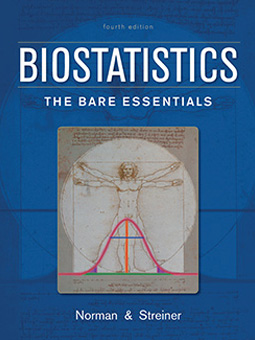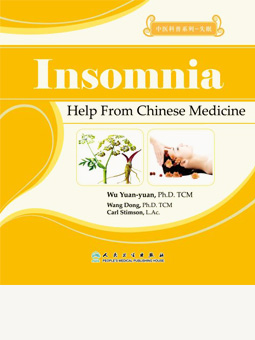
This text, in the comprehensive Clinical Series of acupuncture and moxibustion, provides an integrative health perspective on asthma treatment. The series contains both Western and Chinese medicines’ outlooks on specific diseases or conditions. Detailed Western disease information and effective Chinese clinical treatments are described. The Clinical Series books feature the principles of Traditional Chinese Medicine, syndrome differentiation and treatment, selected quotes from classical texts, and modern research.
Asthma has become an increasingly common disease, with serious side effects from drugs therapy. Consequently, the benefits of TCM in treating asthma are gaining attention in integrative medicine environments. This small volume, Acupuncture and Moxibustion for Asthma, discusses asthma from a TCM perspective as well as a biomedical one, and suggests ways of treating asthma according to both perspectives. The text includes preventative health care, clinical experiences and case studies, quotes from classical texts, and modern research.

Available in paperback and digital format, Biostatistics: The Bare Essentials, 4th edition continues the tradition of translating statistics in health sciences literature with clarity and irreverence. Students and practitioners alike applaud Biostatistics as a practical guide that exposes them to every statistical test they are likely to encounter, with careful conceptual explanations and a minimum of algebra.
Free of calculations and jargon, Bare Essentials speaks so plainly that readers will not need a technical dictionary. The focus is on biometrics concepts, not the math. The objective is to enable one to determine whether the research results are applicable to their own patients.
Throughout, readers will find highlights of areas in which researchers misuse or misinterpret statistical tests. The authors have labeled these “C.R.A.P. Detectors” (Convoluted Reasoning and Anti-Intellectual Pomposity), and they help identify faulty methodology and misuse of statistics.
The previous edition of Bare Essentials presented hierarchical linear modeling, which first appeared in psychology journals and has only recently been described in the medical literature. Chapters on testing for equivalence and non-inferiority and information for getting started with the computer statistics program SPSS are also included.
A very positive review of the 3rd edition of the book by Dr. Naomi Vaisrub appeared in JAMA which praised the book but recommended covering topics in epidemiology, so in the 4th edition the Norman and Streiner took her up on it. They have also included an entirely new chapter, called “Measures of Impact,” in which the authors discuss measures of incidence and prevalence, risk, morbidity and fatality rates, and the number needed to treat. The authors also delve into the Poisson distribution for doing regressions on count data. The reader will find new sections on robust estimators of the mean, the problems of multiple hypothesis testing, bootstrapping and resampling, as well as an expanded section on nonparametric stats.
TCM Case Studies: Pain Management, a volume in the TCM: Case Studies series from the International Standard Library of Chinese Medicine, discusses common clinical presentations of pain syndromes. For a Western integrative health audience, the text references both TCM and modern Western medicine terms.
Representative cases for each condition provide discussions advancing the analytical thinking process behind effective TCM pattern differentiation and treatment. TCM pain disorder treatments mainly include manipulating techniques, herbal formulas, acupuncture, and Chinese prepared medicines.
Commentary and discussion, provided by the Western co-author, serve to compare, corroborate, and contrast the various approaches to diagnosis and treatment. Students of Chinese medicine will find the study questions and answers at the end of each case study to be useful aids for exam preparation and continuing study.
Chinese Materia Medica, an International Standard Library of Chinese Medicine textbook, describes 300 medicinal substances with illustrations and botanical pictures and explanations of names, habitat, collection, processing, properties, entered channels, characteristics, actions, clinical applications, dosage and administration, cautions and contraindications, ingredients, and pharmacological research.
Students of Chinese medicine will find the study questions at the end of each section to be a useful aid for exam preparation and continuing study. A DVD is included.

Herb-Drug Interactions in Oncology provides science-based information for the medical community about herbal remedies, dietary supplements, and non-mainstream products promoted as cancer treatments. Each herb or remedy description is accompanied by information as to its origin, most common uses, benefits, and risks and dangers. This second edition provides detailed information on over 250 remedies and describes their constituents, mechanisms of action, adverse reactions, pharmacokinetics, and contraindications.
Information on each herb or other remedy was developed through careful and critical reviews of research conducted by experts in pharmacy, botanicals, and complementary therapies. Each herb or product is described in terms of the following sections: common name, scientific name, key words, clinical summary, herbal constituents, warnings, mechanisms of action, usage, adverse reactions, drug interactions, dosage, literature summary and critique, and notes.
Herb-Drug Interactions in Oncology has the look and feel of a fine field guide to medicinal plants, thanks to the beautiful drawings by Angela Donato. It will be of interest to a wide audience beyond medical specialists and cancer patients.

Walker’s Pediatric Gastrointestinal Disease, the definitive, two-volume reference work, is dedicated to the maintenance of a comprehensive approach to the practice of pediatric gastroenterology. In the sixth edition, each chapter author, selected because of particular expertise in the field, has provided an authoritative and comprehensive account of their topic. In addition, new sections have been added to reflect the expanding complexity of the field, particularly new techniques now used to accurately establish complex diagnoses.
As with previous editions, in the 6th edition the size and content of each section has been modified and new chapters added to reflect an increasing evolution of subspecialty programs within gastroenterology and a better understanding of subspecialty conditions (motility, inflammation, and autoimmune bowel disease) that have emerged in pediatric gastroenterology.
As the importance of genetics and molecular biology in the pathophysiology and diagnosis of complex pediatric conditions of the gut, pancreas, and liver have become appreciated, expanded chapters cover their importance in the field. Furthermore, a more comprehensive representation of world leaders in pediatric gastroenterology among the editors of this edition has expanded the authorship to reflect experts in specific diseases within various continents rather than principally in North America. In other words, the edition is dedicated to a comprehensive, worldwide approach to the practice of pediatric gastroenterology.
Temporarily Out of Stock.
The third edition of this popular text combines the clinical experiences of Dr. Huang, with the clinical applications and uses for 50 ancient Chinese medicinals. Dr. Huang discusses the applications and indications for medicinals that were frequently used by Zhang Zhong-jing.
This patient education series brings valuable instructions on having the most appropriate lifestyle, diet, exercise, and home therapies when diagnosed with an ailment. It clearly explains the basics of Chinese medical theory and gives a step by step guide to Chinese medical treatment, such as acupuncture, herbal medicine, tui na.
For patients with insomnia, Chinese medicine can provide extraordinary results. Not only can it improve symptoms, but it may help reduce or even eliminate the need for pharmaceuticals. Through acupuncture, Chinese herbs, diet, and exercise. Insomnia: Help from Chinese Medicine will help you take the first steps towards a new and better way of overcoming sleep problems.
The Qinghai-Tibetan Plateau – home to the Tibetan people and many unique varieties of flora and fauna, – is also the home of many legends and fairy tales. These tales, told for generations, formed the basis for the transmission of Tibetan medicine through the years. The author has spent years collecting and analyzing these tales.
Tibetan Herbal Legends presents a brief introduction to Tibetan medicine, its materia medica (botanical and mineral), and stories of 31 Tibetan medicinals. Each story of the 31 medicinals includes their common English name, distributions, actions, characteristics, dosage and administration, as well as the colorful tale behind the medicinal.
Richly illustrated, with a glossary of terms, index, and history of Tibetan medicine, Tibetan Herbal Legends will be of interest to those interested in Eastern medicine, Tibetologists, and herbalists.
This alphabetical reference guide to the basic essentials of Chinese materia medica covers over 300 of the most commonly taught materia medica for clinical use. Key actions, indications, contraindications and cautions are presented.











